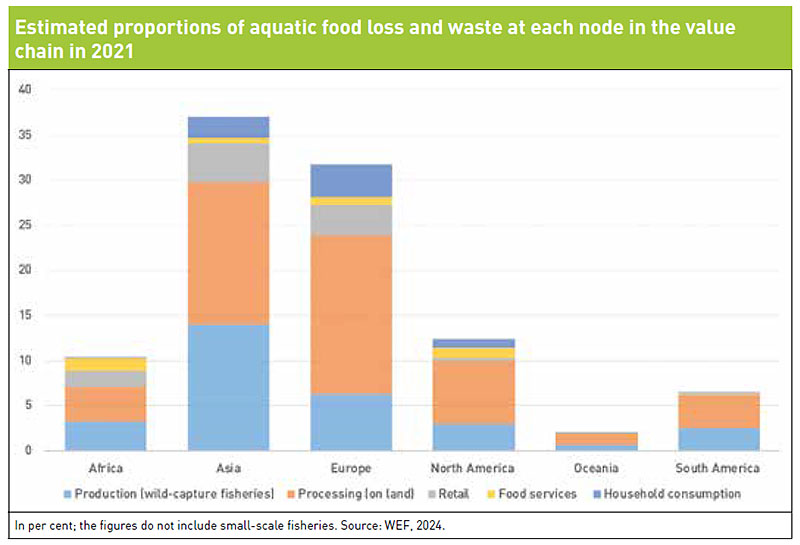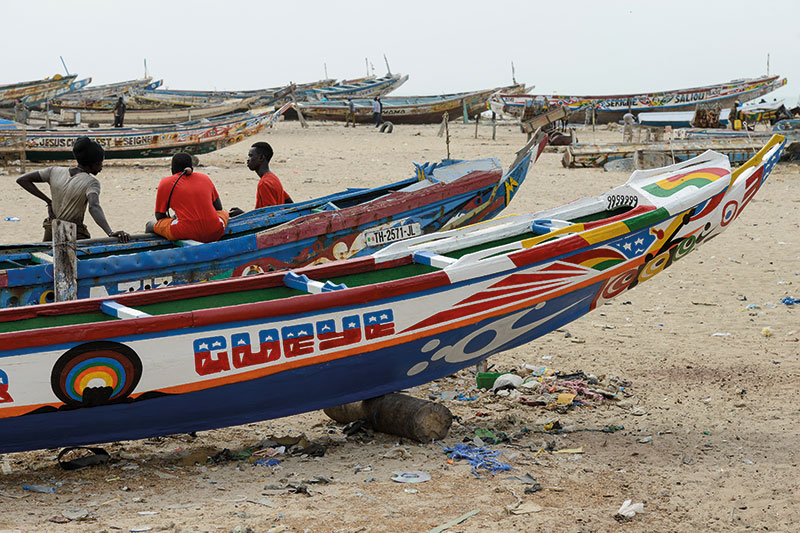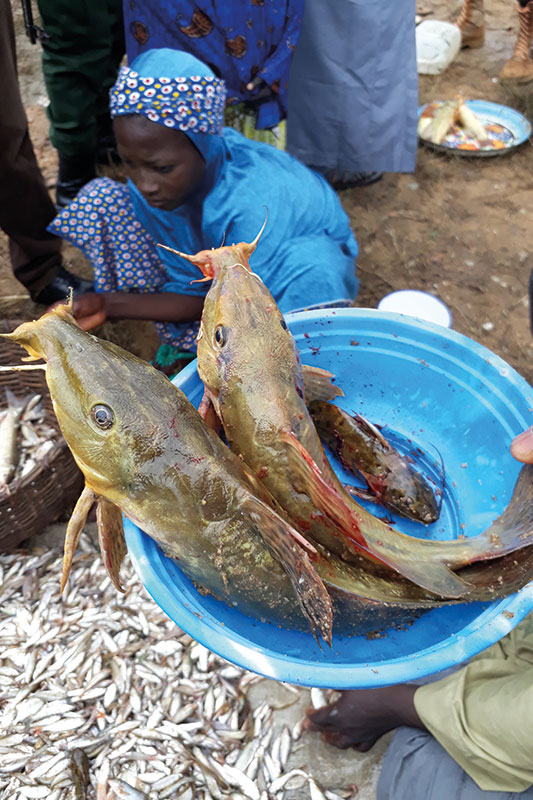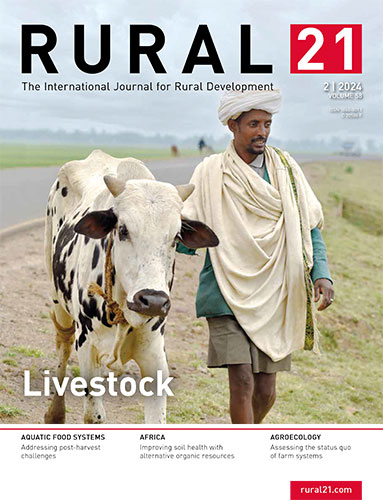 Download this article in magazine layout
Download this article in magazine layout
- Share this article
- Subscribe to our newsletter
Addressing post-harvest challenges in aquatic food systems
Aquatic food systems play a crucial role in global food security and nutrition, providing nearly 20 per cent of animal protein for over three billion people. Beyond this, these systems underpin the livelihoods of approximately 800 million people world-wide, offering opportunities for inclusion, social equity and jobs. The majority of these people live in developing countries, and are responsible for over 50 per cent of the world’s traded seafood. Aquatic foods, encompassing both plants and animals grown in or harvested from an aquatic environment, are especially crucial for many vulnerable communities world-wide, serving as the primary source of essential nutrients where alternative nutrition sources are scarce.
The significance of aquatic food systems extends beyond mere nutrition and livelihoods; they are integral to achieving broader socio-economic objectives, including poverty alleviation, gender equity and environmental sustainability. The United Nations Sustainable Development Goals (SDGs), particularly SDG 2 (Zero Hunger), SDG 14 (Life Below Water) and SDG 12 (Responsible Consumption and Production), underscore the importance of sustainable aquatic food systems. Strengthening these systems through innovations in aquaculture, fisheries management and equitable policy frameworks can catalyse a transformative shift towards a more sustainable and food-secure world.
The growing demand for aquatic food
Globally, the demand for aquatic food is on an upward trajectory, with projections indicating a potential doubling by the year 2050. Current global consumption of marine food is approximately 80 million tonnes in live weight annually. However, according to estimates from the Food and Agriculture Organization of the United Nations (FAO), this is expected to surge to almost 155 million tonnes across all fish and shellfish categories in the next three decades, contingent on sustained production growth and stable prices.
Here are some key points regarding the global demand for aquatic foods and its impact on fish stocks and communities depending on them:
- Most of the recent growth in demand comes from Asia. China is anticipated to continue being the world’s largest fish consumer.
- There is a notable dietary transition in sub-Saharan Africa, where demand has outpaced supply.
- Future increases in demand are likely to be met almost exclusively from aquaculture, which is predominantly situated in Asia.
- While improvements in livestock production have been made and recognised, the potential for expansion in aquatic food production remains vastly untapped. As national incomes rise in many countries, demand has shifted towards less environmentally sustainable aquatic foods like salmon and shrimp due to changing tastes among higher-income earners. However, the consumption of freshwater fish and bivalves remains strong.
- According to the World Resources Institute (WRI), over a third of marine fish stocks are overfished, with more than 60 per cent fished at their maximum sustainable limits, stressing both the marine populations and the communities dependent on them.
Weaknesses of current estimates of fish post-harvest loss and waste
Despite the global abundance of fishery resources, significant post-harvest loss and waste poses a major challenge to realising their full benefits. These losses can be particularly significant in low-income countries, where drivers of losses are less controllable, and the resources to reduce them are limited. Quantifying fish loss and waste presents significant challenges due to a lack of uniformity in measurement methods and significant variations among species, production technologies, geographic origin and value chain stages. Moreover, the existing body of literature on the losses, primarily consisting of ad-hoc case studies, often suffers from significant gaps because lack of resources generally constrains these studies. Also, they focus only on certain stages of the value chain – mainly production and consumption – leaving part of the processes under-studied. Furthermore, the scarcity of post-harvest data on aquaculture leads to uncertain estimations and rough general conclusions drawn from a handful of studies whose findings are extrapolated at national and international levels. The lack of accurate contextual information at the local level is directly linked to limitations in devising measures, plans and strategies to reduce the losses. Accurate and contextual information, however, is critical for policy-makers, planners and researchers to make informed decisions and for the development of targeted interventions to minimise fish loss and waste across the entire value chain.
Loss and waste in small-scale fisheries
Small-scale fisheries constitute a significant portion of the fishing activities in developing countries. For instance, in sub-Saharan Africa, the majority of the fishing industry – exceeding 90 per cent – is characterised by artisanal practices and informal trade networks. The availability of data pertaining to small-scale fisheries, particularly concerning FLW of aquatic products, is notably scarce. The World Economic Forum (WEF) highlighted in its 2014 report that the estimates of post-harvest fish losses within small-scale fisheries varied widely, from 20 per cent to 75 per cent. Such a substantial variance underscores the challenges associated with data acquisition in the small-scale fisheries sector, which is marked by a high degree of diversity in its operational methodologies and the mechanisms through which aquatic foods are lost or wasted.
A widely cited FAO 2011 report estimates that 35 per cent of aquatic foods are lost and wasted world-wide, a level higher than those of cereals (30 %), oilseeds (20 %) and meat and dairy products (20 %). These estimates were based on the assumptions that aquatic food losses stem only from capture fisheries and occur primarily during regional production, and thus failed to account for complex global trade dynamics and the nuances of local consumption patterns, i.e. they lack the accuracy of direct measurements at the household level. An updated FAO report released in 2019 merged data for aquatic food with other animal products, hindering specific challenges faced in and analysis of aquatic food loss and waste (FLW). A recent report (2024) from the World Economic Forum (WEF) provides more updated information on the global aquatic FLW across different nodes of the value chains (also see Figure). The report reveals that globally, 23.8 million tonnes of aquatic food was lost or wasted in 2021, which represents about 15 per cent of the global production. However, the analysis from WEF does not include FLW associated with processing at sea, aquaculture and small-scale fisheries.

In the current literature, food loss in aquatic foods is typically broken down into four groups: physical loss, quality loss, nutritional loss and market force loss. However, for simplicity, it can be broadly categorised into two types: quantitative and qualitative losses. Quantitative losses refer to the actual reduction in the number of fish available for consumption due to spoilage, discards during fishing, accidental loss during handling and transportation issues. These losses not only reduce the food available for consumption but also affect the economic viability of the aquatic food system. Qualitative losses pertain to the deterioration in the nutritional value, texture, flavour and overall acceptability of fish. Factors contributing to qualitative losses include improper handling, inadequate storage, and failure to maintain optimal temperature conditions. Such losses, while not constantly reducing the physical quantity of fish, diminish its economic value and can adversely affect health and nutrition.
Food dynamics
Adopting a food-focused approach allows for a deeper understanding of the social, economic and nutritional impacts of losses and waste. This perspective considers:
Social impacts: how food losses and waste affect food security, livelihoods and cultural practices related to fish consumption and conservation especially in communities heavily dependent on fisheries.
Economic impacts: This includes the financial losses to fishers and farmers, processors, retailers and consumers, along with broader economic implications for local and global markets. Sometimes also called market force losses, these happen when there is a mismatch between the supply and demand of fish, causing price fluctuations.
Nutritional impacts: The analysis of dietary losses due to FLW, particularly in regions reliant on fish as a primary protein source, highlights the significance of addressing FLW for public health. For example, certain heat-sensitive nutrients, such as essential amino acids (lysine), can be altered or damaged during hot smoking, a method commonly used in many African countries.
Environmental impacts: The waste generated from overfishing, discarding, or spoilage of fish contributes to methane emissions during decay, escalates fuel usage along the supply chain and depletes critical resources, thereby adversely affecting the environment.

In sub-Saharan Africa, the majority of the fishing industry – exceeding 90 per cent – is characterised by artisanal practices and informal trade networks.
Photo: Jörg Böthling
Drivers of fish loss and waste along the value chains
Food loss and waste in aquatic food systems stems from a variety of factors, including inadequate cold storage facilities, inefficient transportation, technological gaps and lack of training for fishery workers. These issues are exacerbated by fluctuating market demands and insufficient regulatory frameworks, affecting developed and developing nations. It must be noted that 40 per cent of the aquatic foods world-wide (about 70 million tonnes) is sold live or fresh and is highly perishable if not preserved in some form. This large proportion of fresh aquatic foods is due to their high retail value compared to frozen, dried or smoked produce. But the fresh fish value chain requires a robust cool chain. Moreover, the very nature of aquatic food (characteristics like smelling when not cooled, for example) can cause food safety concerns among consumers, leading to more losses at the market level.
Diving deeper into the specific stages in the supply chain where losses occur will offer insights into the dynamics of these losses and wastes and help identify hot spots that can be targeted to get maximum impact. The typical fish value chain stages and critical drivers of loss and waste are as follows:
Catch stage or primary production: Losses at this stage may result from by-catch (non-target species caught and discarded), damage due to improper handling and spoilage on fishing vessels because of inadequate storage facilities.
Transportation: This stage is critical, especially for perishable products like fish. Losses occur due to delays, lack of refrigeration and rough handling during transport from the fishing area to processing units or markets.
Processing: At the processing stage, losses can result from inefficient processing techniques, equipment failures, or suboptimal processing conditions, leading to spoilage or downgrading of fish products.
Storage: Inadequate storage facilities, poor inventory management and failure to maintain appropriate environmental conditions can lead to significant losses.
Retail and consumption: At the retail level, waste can occur due to overstocking, cosmetic standards rejecting perfectly edible fish, and consumer preferences. At the final consumption stage, household food waste includes discarding edible fish parts and spoilage because of improper storage.
A detailed understanding of where and why losses occur enables the development of targeted interventions at each stage of the food system. These interventions may include:

40 per cent of the aquatic foods world-wide is sold live or fresh or live is highly perishable if not preserved in some form.
Photo: Sunil Siriwardena
Technological innovations: Developing and deploying technologies for better storage, processing and transport can significantly reduce physical and quality losses.
Policy and regulatory measures: Implementing policies that support sustainable fishing practices, reduce by-catch, and improve food safety standards can address systemic issues leading to FLW.
Consumer education: Raising awareness about sustainable consumption practices and the importance of reducing food waste can help mitigate losses at the retail and consumption stages.
Stakeholder collaboration: Engaging all stakeholders, from anglers to consumers, in collaborative efforts to reduce FLW ensures that solutions are comprehensive and sustainable.
Developing a comprehensive framework to reduce fish loss and waste is critical, which in turn helps towards more sustainable fisheries management, improved food security and reduced negative environmental impacts. By focusing on the entire food system and the specific stages where losses occur, targeted solutions can be developed to address this global challenge effectively. Significant losses often occur during processing when various parts of fish remain unused – skin, bones and fish heads, which are mostly discarded. These by-products (also known as wastes) and losses (unintentional losses) can sometimes represent up to 70 per cent of fish. This highlights a major area for improvement.
In conclusion, addressing this challenge in the aquatic food sector is not only about reducing post-harvest losses and wastes but is integral to enhancing the sustainability of global food systems, protecting marine ecosystems and supporting the livelihoods of communities world-wide. Through concerted and coordinated efforts across sectors, there is potential to make significant progress in transforming how we catch, process and consume aquatic foods, ensuring long-term food system resilience. By aligning these efforts with international sustainability goals, including SDGs 12 and 14, we can ensure a more sustainable and prosperous future for fishery-dependent communities globally.
Gathering comprehensive data on small-scale fisheries will contribute to a more holistic understanding of aquatic losses and wastes and help make effective and practical interventions to combat them. Moreover, species-specific information remains a persistent issue, which is vital for effective management of post-harvest losses. The Asia–Africa Blue Tech Superhighway (AABS) project, led by WorldFish, aims to bridge some data gaps in small-scale fisheries across countries, including Kenya, Tanzania and Mozambique.
Aditya Parmar is a post-harvest scientist in food loss and waste at the Sustainable Aquatic Food Systems programme at WorldFish. His work revolves around measuring food loss and waste and devising climate-smart and pro-poor technical and management interventions in the Global South to reduce these losses. Contact: a.parmar@cgiar.org
Cristiano Rossignoli is WorldFish's Monitoring, Evaluation and Learning (MEL) and Impact Assessment Research Leader. He also leads the CGIAR Aquatic Foods Initiative. He has a background in agricultural economics and sustainable aquaculture – his work aims to enhance livelihoods, nutrition, and food security in the blue food economy.
References:
FAO, 2022 The State of World Fisheries and Aquaculture 2022 (fao.org).
Love, D.C., Asche, F., Fry, J. et al. Aquatic food loss and waste rate in the United States is half of earlier estimates. Nat Food 4, 1058–1069 (2023). https://doi.org/10.1038/s43016-023-00881-z.
WEF 2024, Investigating Global Aquatic Food Loss and Waste 2024 | World Economic Forum (weforum.org).
WRI, 2021, How to Reduce Seafood Waste and Loss | World Resources Institute (wri.org).
www3.weforum.org/docs/WEF_Investigating_Global_Aquatic_Food_Loss_and_Waste_2024.pdf.





Add a comment
Be the First to Comment